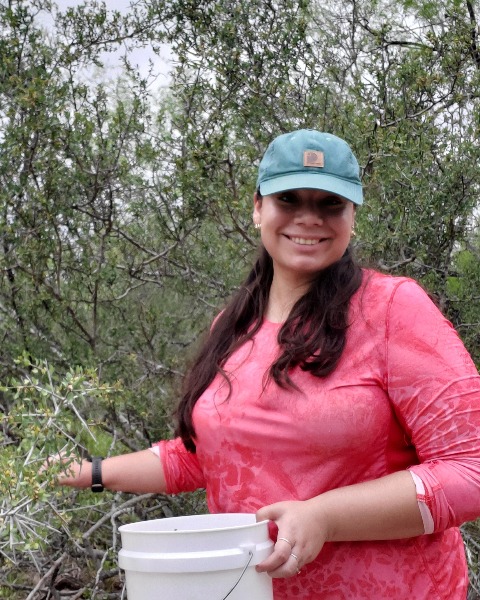Back
Contributed Poster
Session: Seed Production, Dispersal, And Predation
PS 19-265 - Seed collection times in the Rio Grande Valley of Texas: Useful knowledge for Thornforest restoration
Monday, August 7, 2023
5:00 PM - 6:30 PM PDT
Location: ESA Exhibit Hall

Gisel Garza, n/a
Project Manager of Restoration for the Rio Grande Valley
American Forests
Los Ebanos, Texas, United States- JD
Jon Dale
American Forests, United States
Presenting Author(s)
Coauthor(s)
Abstract: Across all landscapes and forest types, seed shortages are barriers to restoration. Seedlings used in restoration practices grow from seeds, and with studies showing that over 133 million acres of land need to be restored nationwide, addressing this goal will require more than 3 billion seeds. The Rio Grande Valley (RGV) of Texas is home to the Thornforests, a highly biodiverse vegetation type with over 1,200 different species of plants, many of which grow as dense thorny shrubs and small trees that do well in South Texas’ semi-arid, subtropical climate. This habitat is home to 48% of the nation’s butterflies, 52% of the nation’s birds, and 45 federally and state endangered species. Severe habitat loss has led to less than 10% of original thornforest remaining, most as fragmented remnants. For over 40 years, restoration of thornforest habitat has been ongoing using a high-density diverse planting approach of approximately 30-40 different species. Seed collection happens year-round in the RGV, and restoration practitioners have an idea of approximate times that each species’ seeds should be collected, yet specific guidelines and the impact of climate change remain unknown. Phenology for most thornforest species is correlated with precipitation; most species bloom shortly after rains and aren’t adapted to below freezing temperatures. In February 2021 an unusual freezing event occurred in the RGV, and recent field visits have revealed that seed collection times for many native species have shifted when compared to expected. Here, we compare times when seeds are expected for several restoration species with recent records of seed collection from field visits conducted from June 2021 to February 2023 to provide a visual of this shift in species’ seed production. A comparison of recent seed collection dates for 20 different species were compared with records of seed collection dates for these same species in the past. Results show that for some species, seed collection was delayed (for Texas Ebony as much as 10 months) when compared to expected, and mature seeds were not available in 2021, instead being delayed until 2022. With seeds being such a precious resource for restoration, and changes in climate patterns occurring more frequently, understanding these differences can help restoration practitioners know when to expect seed collection times in the RGV, and better structure seed storage practices.
